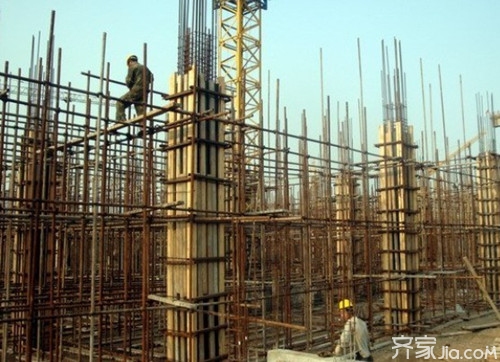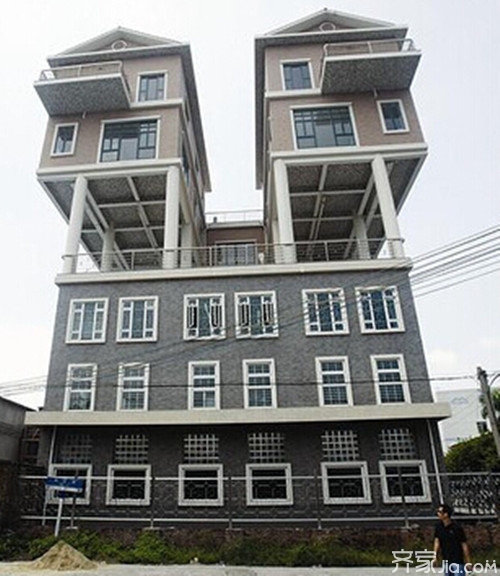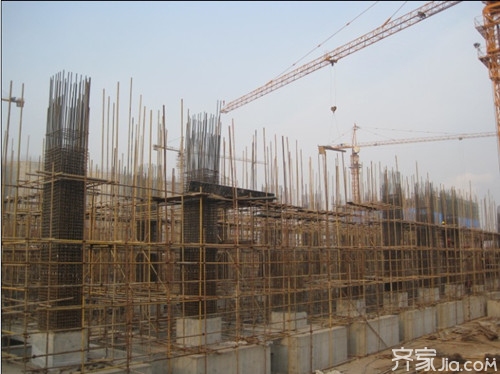The Effect of Axial Compression Ratio of Frame Column Axial Compression Ratio on Earthquake Resistance
In general, for the non-bottom reinforced parts of the 3rd and 4th shear walls and the 1st and 2nd shear walls, it is not necessary to control the axial pressure ratio limit. The following small series details the relevant knowledge of the axial ratio of the frame column. Frame column axial compression ratio characteristics: The greater the axial compression ratio, the less safe it is and the worse the shock resistance. At the same time, it also saves material and saves cost. The column axial compression ratio is specified in 6.3.6 of the Code for Seismic Design of Buildings (50011-2010) and 11.4.16 of the Design Code of Concrete Structures (50010-2010). The limitation of the axial pressure ratio is mainly to control the ductility of the structure. The greater the axial compression ratio, the worse the ductility of the column and the brittleness of the column under earthquake. Simply put, the greater the column axial compression ratio, the corresponding reinforcement will be larger. The column axial pressure ratio is usually close to the specification limit, although it does not exceed the specification limit, but the steel bar will be very large, it is better to increase the column one more level, generally 50mm is a level. The axial compression ratio is very small, indicating that the column has a large cross-section, and in the absence of other requirements, the column section can be reduced by the calculation of reinforcement. Generally, in the seismic design, the upper limit of the axial pressure ratio should be controlled, that is, the axial force of the control column should not be too large. If the axial force is too large, the axial pressure ratio must be reduced to meet the specification limit by increasing the area of ​​the column. The axial compression ratio is an indicator of the conceptual design of seismic resistance. It is not obtained through theoretical calculations. Instead, through testing and actual seismic damage, it is found that the column with low axial compression ratio is better in ductility, and the degree of earthquake damage is much smaller than that with high axial pressure ratio. Therefore, the specification sets the upper limit of the axial pressure ratio to ensure the column's ductility and improve the seismic performance. The axial pressure ratio refers to the ratio of the axial pressure design value of the column (wall) to the product of the total cross-sectional area of ​​the column (wall) and the design value of the axial compressive strength of the concrete (further understood as: the axial pressure design value of the column (wall) and Column (wall) axis against pressure design value ratio). It reflects the compression of columns (walls), 6.3.6 of the "Code for Seismic Design of Buildings" (50011-2010) and 11.4.16 of the "Code for Design of Concrete Structures" (50010-2010). The limitation that the column axial compression ratio is limited is mainly to control the ductility of the column, because the greater the axial compression ratio, the worse the ductility of the column and the brittleness of the column under seismic action. Why limit the axial compression ratio in the frame column? Limiting the axial pressure ratio is mainly to control the ductility of the structure, and specifications have corresponding limits for wall limbs and columns. 1. Axial pressure ratio μ refers to the ratio of the design value of the axial pressure of frame columns and frame columns to the product of the total column area area A and the design value of the concrete axial compressive strength fc considering the combination of seismic effects; Structure, take axial force design value without combination of seismic action. 2. When the concrete strength grade is C65~C70, the axial pressure ratio limit value should be reduced by 0.05 in the table; when the concrete strength grade is C75~C80, the axial pressure ratio limit value should be reduced by 0.10 according to the value in the table. 3. For column with shear span ratio λ not greater than 2, the axial pressure ratio limit value should be reduced by 0.05 in the table; for the column with shear span ratio λ less than 1.5, the axial pressure ratio limit should be specially studied and special construction measures should be taken. . 4. Adopt Tic-tape compound hoop along the full height of the column, and the spacing between stirrups should not exceed 100mm, the distance between the stirrups should not exceed 200mm, the diameter should not be less than 12mm, or the composite spiral hoops should be used along the full height of the column, and the pitch should not exceed 100mm and the distance between the limbs should not exceed 200mm. When the diameter is not less than 12mm, or continuous composite rectangular spiral hoops are used along the column full height, and the pitch is not more than 80mm, the limb distance is not more than 200mm, and the diameter is not less than 10mm, the axial pressure ratio limit can be increased by 0.10 according to the value in the table; The eigenvalues ​​of the three stirrup reinforcements shall be determined according to the increased axial compression ratio in the table of “Feature Values ​​for the Minimum Hoops of Stirrups in the Encryption Zone of Column Stirrups†in the specification. 5. After the column has been strengthened by the above measures, the final axial pressure ratio limit should not exceed 1.05. The role of axial compression ratio in seismic resistance: To put it plainly, in vernacular it is the ratio of axial stress to bearing capacity of the column or wall itself. u = N / A * fc, the meaning of the formula has been answered clearly upstairs. The control of the axial pressure ratio is very important in the structural design. It is easy to see that the hot spot axial pressure ratio is too large. This can save money, but the safety margin reserved for the structure may not be sufficient. If the axial compression ratio is too small, the structure is too safe. It is not necessary to make such a large column but to make such a large column, which is wasteful. If you want to do the structural design of this line, to recommend a book to you: Shenzhen Architectural Design Institute of structural professional design and unified technical measures (2003 version). Learn about the ratio of the axial pressure design value of the axial compression ratio finger to the product of the total cross-sectional area of ​​the column and the design value of the concrete axial compressive strength! u=N/A*fc, u—axial compression ratio, for non-seismic areas . When the axial compression ratio of the bottom reinforced zone and adjacent layer is less than 0.3 (three-level earthquake resistance), it can be. First of all, yes. According to the earthquake code. For the anti-seismic wall structure, the axial compression ratio of the bottom section of the bottom wall is not greater than the specified first, second and third-order seismic walls and the fourth-grade anti-seismic wall. The structural limb elements may be provided at both ends of the wall limb. As for the axial pressure ratio of the wall that goes up further, the constraint edge element should be set in accordance with my understanding of the specification. The above is related to the introduction of the column-column axial pressure ratio. If you want to know more relevant information, please pay more attention to this site and we will provide you with more complete, more detailed and updated information. Concrete staircase staircase column crystal column entrance Best Tea Infuser,Tea Infuser Teapot,Green Tea Infuser,Glass Teapot With Infuser YANGJIANG VOSSEN INDUSTRY AND TRADE CO.,LTD , https://www.cnvossen.com


